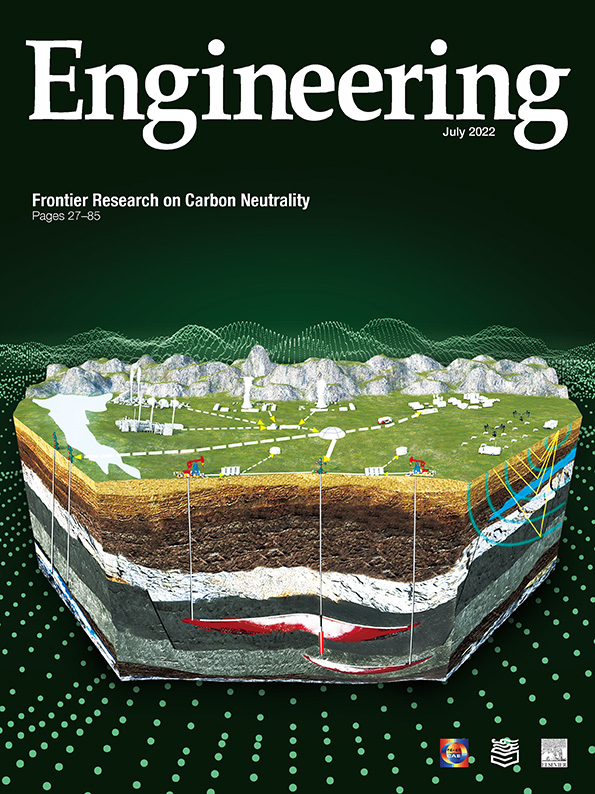
China’s solemn commitment to the world to strive for carbon neutrality by 2060 demonstrates the nation’s determination to take a new development route, different from its impressive achievements during the more than 40 years since 1979. Taking a green, low-carbon, and high-quality development path is also a strong manifestation of China’s determination to follow its consistent development belief of ‘‘conformity with morality,” with its emphasis on multilateral mechanisms and a willingness to make the best possible contribution to global concerns such as adaption to and mitigation of climate change. Through actions that promote carbon neutrality, China also wants to create change in its energy structure, which will be followed by a newly generated industrial structure and socioeconomic status, so as to inspire its citizens to better meet the challenges of the fourth industrial revolution and to take on an active role in this process. Furthermore, achieving the strategic goal of carbon neutrality will have a significant impact on the long-term stability of China’s development.
In the future, China will face many challenges and uncertainties regarding possible scenarios with different emission peak times and carbon emissions by 2050 and the extent of its use of renewables. China is also likely to be confronted with the problem of a portion of carbon dioxide (CO2) from fossil energy combustion remaining in the atmosphere through various efforts by 2050 or 2060, requiring the technology of carbon capture and storage (CCS). The establishment of major science and technology CCS infrastructures is a decisive factor in CCS technological innovation, cost and risk reduction, commercial promotion, and talent training for key technologies. Aside from CCS, carbon capture, utilization, and storage (CCUS) is another means of addressing retained atmospheric CO2 that deserves attention. Significant scientific and technological difficulties and opportunities remain to be overcome or achieved in terms of capture, utilization, and storage, respectively. Energy transition is also a very important technology for the process of replacing traditional fossil energy with renewables, and it needs to be commercialized at a significantly reduced cost.
In addition to issues related to achieving carbon neutrality in large-scale industries, there are scientific and technological issues related to achieving carbon neutrality in sectors that are closely linked to social life, such as wastewater treatment. The effects of actions promoting carbon neutrality also need to be promptly monitored, accounted for, and evaluated. Moreover, China needs to learn from and make progress based on the practices and experiences of other countries. For this special issue, six articles and an opinion paper have been chosen to report on the most recent insights into science and technologies aimed at carbon neutrality.
In this issue, Zhang and Chen propose and compare four carbonneutral scenarios with different emission peak times and carbon emissions by 2050 using the Integrated MARKAL-EFOM System (TIMES) model of China. They demonstrate that China’s carbonemission peak (at 10.3–10.4 Gt) will occur between 2025 and 2030. By that time, renewables will account for 60% of China’s total energy consumption (calorific value calculation) and 90% of total electricity generation, and the electrification rate will be close to 60%. The authors emphasize that achieving peak emissions earlier will yield more near-term benefits but will require an accelerated phasing out of coal after 2025 and the widespread deployment of renewables during the subsequent decade.
Ma et al. review the development and classification of CCS projects in advanced countries to provide a reference for other countries aiming to deploy and promote CCS projects. Practices in advanced countries show that establishing major science and technology CCS infrastructures has been the dominant factor in CCS technological innovation, cost and risk reduction, commercial promotion, and talent training for key technologies.
Lin et al. present a technical perspective on critical aspects of CCUS and propose that chemical absorption requires efficient and low-cost absorbents for its deployment in carbon capture. For carbon utilization, the development of highly active, selective, and stable electrocatalysts and the optimization of electrolyzer design are the future directions for electrochemical conversion. For carbon storage, successful deployment relies on a better understanding of fluid mechanics, geomechanics, and reactive transport.
Blunt and Lin suggest applications of multiphase flow in porous media that are relevant to the current energy transition. They propose a framework for designing multiphase displacement that is optimal for flow, trapping, and saturation. This framework can be used to design efficient devices and effective storage schemes that make use of recent advances in non-destructive three-dimensional (3D) imaging, analysis, and modeling.
Lam et al. assess the progress and lessons learned from the greenhouse gas (GHG) emissions management of urban water systems in four global cities: Amsterdam, Melbourne, New York City, and Tokyo. The study shows that it is difficult for the water industry to achieve carbon neutrality on its own. A collaborative approach with other sectors is needed when aiming toward a city’s carbon-neutrality goal. This approach also involves expanding the usual water industry system boundary to externally tap into engineering and non-engineering opportunities.
Liu et al. review conventional annual-based carbon-emission accounting approaches and emerging real-time carbon-emission monitoring technologies. The authors argue that real-time carbon-emission monitoring technology would strongly support the carbon-neutrality strategy in China and present a global near-real-time carbon-emission framework.
Wei et al. summarize the priorities, perspectives, and scientific and strategic demands involved in achieving a carbon peak and carbon neutrality by reviewing 1105 publications on these two carbon-emission-reduction goals between 1995 and 2020. Based on a full review of the research status in this field, the authors propose theoretical insights and practical countermeasures that would facilitate achieving a carbon-neutral future.
We believe that these articles can provide readers with information on recent developments in science, technology, and systems management for achieving the goals of carbon neutrality and a sustainable future for our planet.













 京公网安备 11010502051620号
京公网安备 11010502051620号




